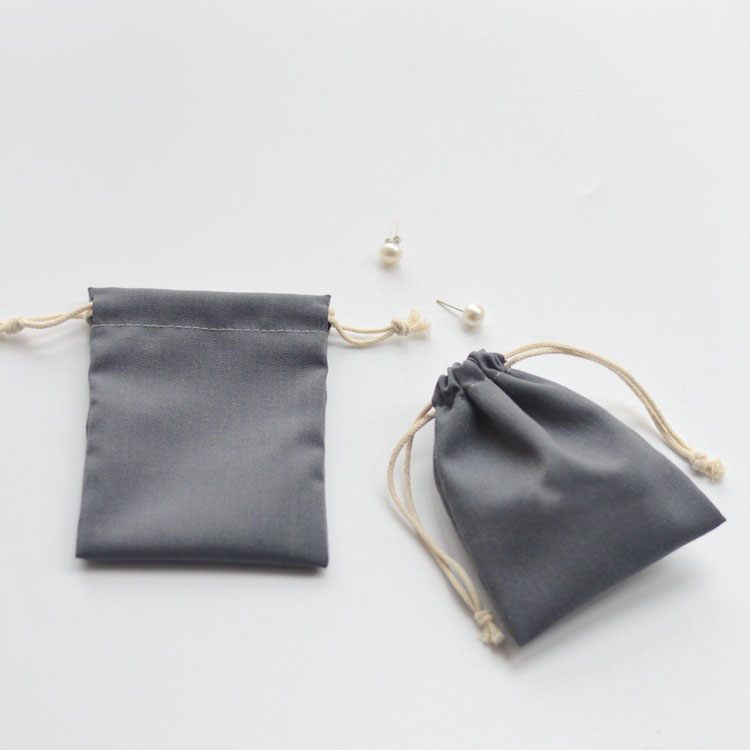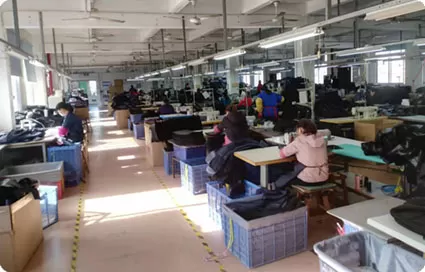The Full-Spectrum Defense Against Pilling in Drawstring Bags: 20 Critical Control Points from Fiber to Finished Product
In everyday use, the tiny fuzzballs that quietly form on the surface of drawstring bags may seem like minor flaws—but in reality, they reflect the complex interplay between textile engineering and real-world usage scenarios. Unlike apparel, drawstring bags are subject to repeated weight-bearing, constant friction, and frequent pulling, placing greater demands on yarn integrity and finishing techniques. From the molecular characteristics of the fiber to millimeter-level precision in stitching, even the slightest deviation can trigger a “butterfly effect.” This article cuts through vague generalities with a deep dive into 20 technical control points, unveiling the full-process logic behind pill-resistant drawstring bags.
The Genetic Battle of Fiber Selection
1. The Double-Edged Sword of Cotton-Polyester Blends
The classic 65% cotton / 35% polyester blend leverages the crimp of natural cotton fibers (15–20 crimps per cm on average) and the rigidity of polyester to balance softness and durability. However, increasing cotton content beyond 70% can cause the Martindale pilling grade to plummet from Level 4 to 2.5. One cross-border e-commerce bestseller uses an innovative 55% organic cotton + 45% ultrafine polyester (0.8D) blend, which maintains softness while extending the pilling cycle to 2.3 times that of standard fabrics.
2. The Invisible Threshold of Fiber Length
Long-staple cotton fibers (≥38mm) reduce fuzz formation by 42% during ring spinning compared to 28mm short fibers. However, in air-jet spinning, fibers exceeding 40mm may compromise yarn evenness. A Japanese premium brand mandates a coefficient of variation under 25% for fiber length in yarns used for drawstring bags.
3. The Microscopic Game of Cross-Section Shapes
Special-shaped polyester fibers (cross-shaped, trilobal) offer 60% stronger inter-fiber cohesion than round ones, though production costs rise by 18%. A Korean R&D team developed a chrysanthemum-shaped fiber with 16 grooves, increasing surface area by 35% and delaying initial pilling by 5 hours—without raising material costs.
The Technical Warfare in Spinning
4. The Golden Rule of Yarn Twist
Increasing twist from 680 to 750 TPM in 32s yarn boosts strength by 15%, but reduces softness, causing permanent creases when the bag is folded. Empirical formula: Optimal twist = Yarn count × 22 ± 5%. For instance, ideal twist for 40s yarn ranges from 880–900 TPM.
5. The Triple Line of Fuzz Control
A German brand’s electronic yarn clearer sets precise defect thresholds: thick short slubs (+180% × 4cm), thin long slubs (−45% × 20cm), and neps (+400% × 1cm). With ambient humidity controlled to 65% ± 5%, harmful fuzz >3mm is reduced by 78%.
6. The Structural Innovation of Core-Spun Yarns
Elastic core-spun yarns with a 40D spandex core and 32s combed cotton sheath exhibit 92% longitudinal elastic recovery at high-stress zones of the bag—cutting frictional displacement by 37%. Caution: exposed core fibers can cause snags.
The Chemical Revolution in Finishing
7. The Temperature Code in Singeing
Optimal flame temperatures in a liquefied gas singeing machine: entry 980°C → mid 920°C → exit 860°C. For double-sided singeing, the speed should be 100–120 m/min; going too slow risks polyester crystallization (DSC reveals failure if melt point shifts by 3°C).
8. Targeted Strike with Enzymes
Acidic cellulase (2–3% owf) at pH 4.5 and 50°C for 40 minutes can selectively hydrolyze surface fibrils (DP drops from 1800 to 1200). Must be deactivated in 95°C hot water afterward—enzyme residues over 15 IU/g can lead to yellowing.
9. Cross-Industry Nanocoating Application
A ZnO/TiO₂ nanoparticle coating (30–50nm) creates micro-rough surfaces that increase contact angle from 105° to 142°, reducing capillary entanglement. A sportswear brand adopting this tech reported a 91% drop in water-use-related pilling complaints.
Mechanical Ingenuity in Product Design
10. Quantum-Level Weave Density Optimization
A plain weave with 78 warp/inch + 64 weft/inch balances breathability and reduces yarn slippage by 53%. However, beware of stiffness—bending rigidity >6cN/cm² negatively impacts folding performance.
11. The Millimeter War in Sewing
Optimal needle-to-thread ratio: No.11 needle (0.91mm) + 250D high-tenacity thread. Increasing SPI (stitches per inch) from 8 to 10 raises seam strength by 28%, but sewing temperature must drop 15°C to prevent fiber melt.
12. Topological Optimization of Drawstring Holes
Finite element analysis supports switching from circular to teardrop-shaped openings (8mm × 5mm) with a 3mm reinforcement patch on the tension side. This lowers local stress concentration from 2.7 to 1.8.
The Butterfly Effect of Environmental Variables
13. The Fatal Threshold of Storage Humidity
If warehouse RH exceeds 75% for 72 hours, cotton regain rises from 7% to 9.5%, cutting yarn strength by 12%. A rainy season incident caused widespread pilling due to damp raw materials.
14. Cumulative Fatigue from Transport Vibration
Simulated 48-hour vibration at 8Hz/3G mimics 360km road transit. Short-fiber breakage rises by 17%, forming hidden pilling sources.
15. Secondary Damage from Washing
Centrifugal force in a 1200rpm drum washer = 15× gravity. A user survey found machine-washed bags pill 2.8× more than hand-washed. Recommendation: Add icon for “Turn inside out and gently hand wash.”
Digital Advancements in Quality Control
16. AI Visual Inspection Systems
Deep-learning pilling prediction models trained on 20,000+ images can detect pilling points >0.3mm. Early detection during inspection reduces material waste by 7% in the cutting stage.
17. Friction Testing with Real-World Simulations
Customized Martindale setup simulates a 5kg-loaded drawstring bag dragged on rough ground. Test settings: 12kPa pressure, 50mm stroke, 2Hz frequency—more representative of real-life stress than standard tests.
18. Big Data Traceability Systems
End-to-end QR tracing from cotton field to bag can retrieve spinning parameters (spindle speed, draft ratio) and chemical batch codes (e.g., enzyme activity). A customer complaint was traced to a singeing thermocouple calibration error, enabling targeted recall.
The Balancing Art of Cost Control
19. Process Substitution Matrix
| Control Goal |
Budget Option |
Premium Option |
Cost Increase |
| Reduce fuzz |
Single-sided singeing |
Enzyme + Plasma treatment |
+23% |
| Enhance abrasion |
Higher yarn twist |
Core-spun yarn structure |
+18% |
| Antistatic finish |
Standard antistatic |
Carbon fiber blend |
+41% |
20. Reviving Defective Products
- For pre-pilled rejects, consider:
- ① Rotary lint trimmer (8000rpm) for surface cleanup
- ② Silicone finish via padding to restore smoothness
- ③ Upcycle into small organizers for resale.
- One factory cut defect loss rate from 3.2% to 0.7% with this approach.
Conclusion
Achieving pill resistance in drawstring bags is a precision engineering task across the entire supply chain. Yarn twist and fuzz control provide a physical foundation; chemical finishing builds a micro-scale defense; and mechanical design combined with environmental forecasting forms the final tactical layer. Data shows that redesigning drawstring holes alone can reduce localized pilling by 76%, while a 3% change in storage humidity can lower the product pass rate by 15%. These seemingly isolated technical points are actually part of a tightly linked system. Only by integrating fiber traits, process parameters, and usage scenarios into a unified algorithmic model can the industry truly deliver on the promise of “zero pilling.”




 We like to do design according to all the customers' requirements, or offer them our new designs. With strong OEM/ODM capabilities, we can fill your sourcing demands.
We like to do design according to all the customers' requirements, or offer them our new designs. With strong OEM/ODM capabilities, we can fill your sourcing demands.